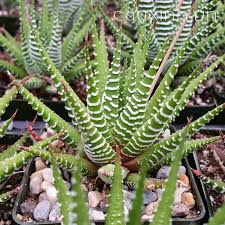Blue Willow China and the Vintage Dining Table: A Timeless Pairing

The charm of a vintage dining table lies in its ability to evoke nostalgia, elegance, and a sense of timelessness. Whether it’s a treasured family heirloom or a carefully curated piece, a vintage dining table has the unique ability to bring history and character to any home. And when paired with the iconic Blue Willow China, the effect is even more striking. Known for its classic blue-and-white design, Blue Willow China has been a staple in dining rooms and tea tables for centuries. Its elegant aesthetic and rich history make it a perfect fit for vintage-style dining tables, combining the past and present in a way that enhances the dining experience. In this article, we will explore how Blue Willow China complements the vintage dining table and how it can elevate your dining space, creating a timeless ambiance that blends tradition with contemporary flair.
The Appeal of Vintage Dining Tables
Vintage dining tables are characterized by their distinct style and age-old craftsmanship. These tables often feature rich wood tones, intricate detailing, and a sense of sturdiness that modern furniture sometimes lacks. Many vintage dining tables are made from high-quality materials such as oak, mahogany, or walnut, which not only enhance their visual appeal but also ensure their durability. Some are hand-carved or designed with intricate features, giving them a one-of-a-kind appearance that speaks to the skilled artisanship of past eras.
The vintage style is often associated with a sense of history, charm, and authenticity. Dining tables in this style have a welcoming, lived-in feel, inviting people to gather and share meals, stories, and memories. A vintage dining table can serve as the centerpiece of any dining room, offering a focal point that sets the tone for the space. It’s in these settings that Blue Willow China can truly shine, enhancing the atmosphere with its timeless design and storytelling imagery.
The Allure of Blue Willow China
Blue Willow China is one of the most iconic and enduring patterns in the world of porcelain. Known for its beautiful blue-and-white design, Blue Willow has a rich history that spans over two centuries. First created in England in the late 18th century, the pattern is based on a blend of Chinese-inspired motifs, particularly those found in Chinoiserie art. It features a romantic narrative of two lovers, Koong-se and Chang, who are separated by the girl’s father but reunited in the afterlife as doves. The design incorporates elements such as a willow tree, a bridge, birds, and a pagoda, each symbolizing different aspects of the story.
The popularity of Blue Willow China grew rapidly in the 19th century and became synonymous with traditional tea culture and fine dining. Its striking blue-and-white color palette makes it easily recognizable, while the intricate detailing on each piece offers a sense of elegance and refinement. The appeal of Blue Willow China lies not only in its beauty but also in its ability to evoke a sense of nostalgia and connection to the past. For this reason, it has remained a favorite among collectors and is still widely used in modern-day dining settings, particularly for vintage-inspired tables.
Why Blue Willow China Complements Vintage Dining Tables
- Timeless Aesthetic Appeal
One of the key reasons Blue Willow China pairs so well with vintage dining tables is its timeless aesthetic. The delicate blue-and-white design of Blue Willow has the ability to evoke a sense of nostalgia and old-world charm, making it the perfect companion for a vintage dining table. The intricate patterns on each piece of Blue Willow China—whether on the dinner plates, teacups, or serving dishes—add a touch of elegance and sophistication to the table setting.
Vintage dining tables often feature rich wood finishes, which provide a warm, inviting foundation for the cooler tones of Blue Willow China. The contrast between the natural wood and the porcelain pattern creates a balanced visual effect, adding depth and interest to the dining experience. Whether you’re hosting a formal dinner or a casual meal, the combination of a vintage table and Blue Willow China ensures that your dining space looks refined and full of character.
- Cultural and Historical Connection
Both Blue Willow China and vintage dining tables share a deep connection to history, which makes them an ideal pairing for those who appreciate the past. Blue Willow China tells a story with its intricate design, while vintage tables are often crafted with stories of their own. For instance, a table passed down through generations may have witnessed countless family dinners, celebrations, and milestones. When paired with Blue Willow China, these elements of history and storytelling are amplified, creating a dining experience that feels rich with cultural and familial meaning.
Moreover, Blue Willow China was often used in the homes of the British aristocracy and wealthy families during the 18th and 19th centuries. Its popularity during the Victorian era makes it a fitting addition to a vintage-style dining table, which might have been part of a similarly opulent setting. The pairing evokes a sense of traditional elegance and sophistication, creating a bridge between past and present.
- Elegance and Charm for Every Occasion
One of the most attractive aspects of Blue Willow China is its versatility. While it has an air of formal elegance, it is also well-suited for casual settings. This adaptability makes it a perfect match for vintage dining tables, which often come in a range of styles—from grand, ornately carved tables to simpler, rustic ones. Whether you’re hosting an intimate dinner party or a more laid-back family meal, Blue Willow China can elevate the occasion with its classic design.
The charm of a vintage dining table lies in its ability to be dressed up or down depending on the setting. Blue Willow China adds a layer of sophistication to any meal, creating a sense of occasion even in everyday dining. From formal dinner parties to afternoon teas, Blue Willow China enhances the dining experience and creates an atmosphere of warmth and hospitality.
- Symbolism and Storytelling
Another way Blue Willow China enhances the vintage dining experience is through its storytelling symbolism. The design of Blue Willow features a beautiful narrative about love, loss, and reunion. The story behind the pattern adds an emotional depth to the dining experience, encouraging conversation and connection. When placed on a vintage dining table, Blue Willow China invites guests to not only appreciate its beauty but also engage with its rich narrative.
The symbolism of Blue Willow China complements the often deep-rooted history of a vintage dining table, creating a sense of continuity and connection across generations. This shared connection to the past makes each meal feel more meaningful, as guests become part of a larger story that spans centuries. Whether you’re enjoying a family gathering or a celebratory event, the combination of Blue Willow China and a vintage dining table fosters a deeper sense of connection, history, and tradition.
How to Style Your Vintage Dining Table with Blue Willow China
Styling your vintage dining table with Blue Willow China can be a simple yet elegant way to create a sophisticated dining space. Here are some tips for incorporating Blue Willow China into your vintage-inspired dining room:
- Choose a Balanced Color Scheme
Blue Willow China features a striking blue-and-white pattern, so it’s important to balance the color scheme with the rest of your dining room decor. Opt for neutral tablecloths or placemats in shades of white, cream, or soft gray to allow the Blue Willow China to stand out. If your vintage dining table has a dark wood finish, the contrast between the porcelain and the table will be visually striking.
- Mix and Match Vintage Elements
A vintage dining table often has an eclectic mix of furniture and accessories, so don’t be afraid to combine Blue Willow China with other vintage pieces. For example, pair your Blue Willow dinnerware with vintage silverware, crystal glassware, or linen napkins. The mix of textures and materials will add depth and character to your table setting.
- Create a Layered Table Setting
For a more formal setting, consider layering your Blue Willow China. Start with a charger plate, then add a dinner plate, salad plate, and dessert plate. You can also stack your Blue Willow teacups and saucers, creating an elegant and polished look. This layered approach adds visual interest and creates a more refined atmosphere for dinner parties or special occasions.
- Incorporate Floral or Greenery Accents
While Blue Willow China features detailed floral motifs, adding fresh flowers or greenery to the table can enhance the natural beauty of your vintage dining room. A small vase of fresh flowers, such as roses or lilies, placed in the center of the table can complement the delicate design of the Blue Willow china, creating a harmonious and inviting atmosphere.
Conclusion: The Timeless Appeal of Blue Willow China and Vintage Dining Tables
Blue Willow China and vintage dining tables are a perfect pairing, combining timeless elegance, cultural significance, and rich history. Whether used for a formal dinner or a casual family meal, this pairing creates an atmosphere of sophistication and warmth that enhances the dining experience. The intricate design of Blue Willow China, combined with the rustic charm and historical allure of a vintage dining table, offers a visual and emotional connection to the past. Together, they form a beautiful and meaningful setting that invites conversation, connection, and reflection—a true celebration of tradition and timeless beauty.

